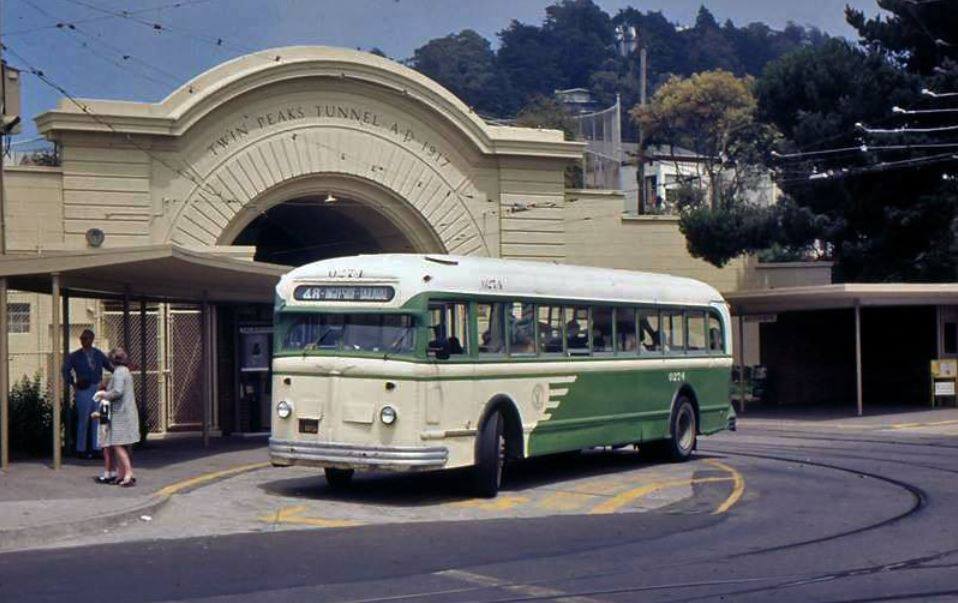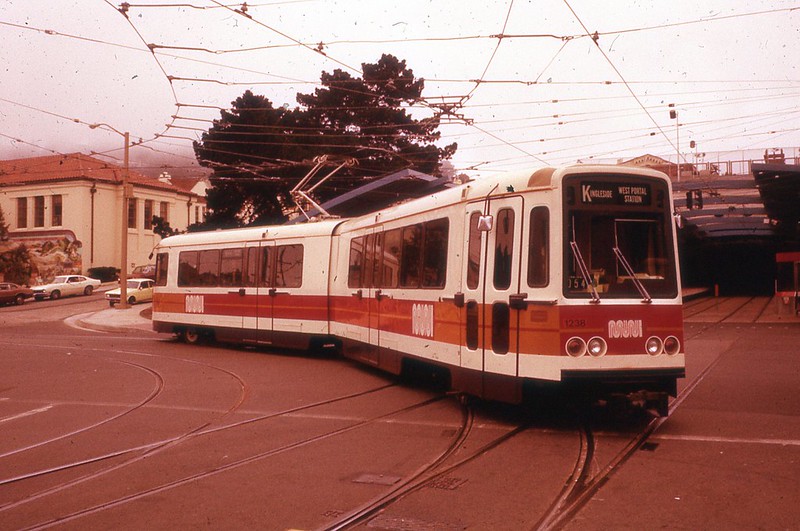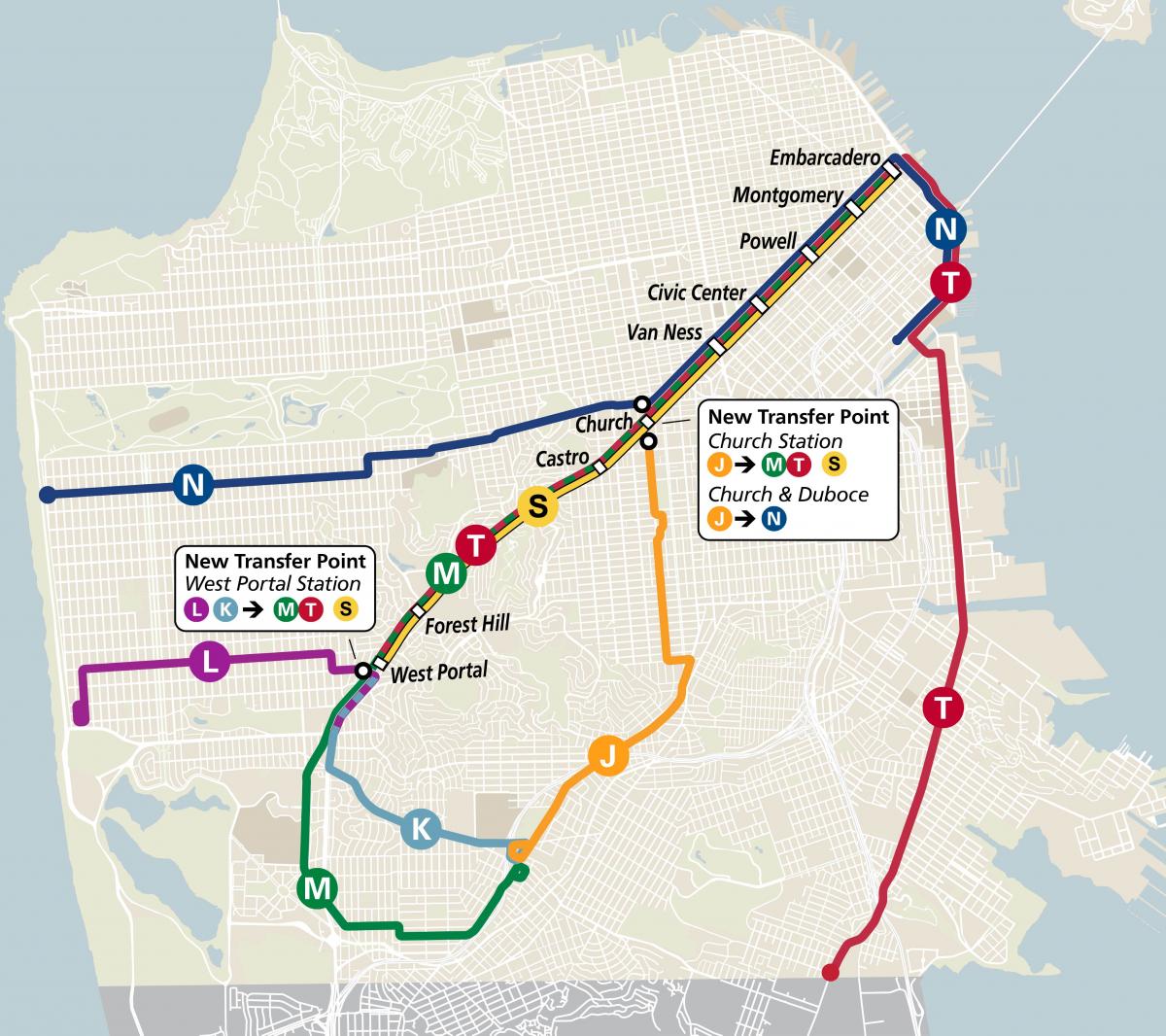
All Muni rail service has been halted since March with selected replacement by buses. Metro lines are now slated to reopen in mid-August, though no date has yet been set for resumption of historic streetcar and cable car service.
But Muni Metro will be different when it returns, at least at first. In a bold step, Jeff Tumlin, boss of Muni’s parent SFMTA, and Muni head Julie Kirschbaum are re-imagining Muni Metro for the first time since it opened in the early 1980s. This post on the SFMTA website has all the details, so we won’t recount them here, though we are including the post’s map below.
We’re a historic transit site, so we’ll focus on the history, starting with the origins of Muni Metro. Muni was essentially gifted the Market Street Subway as part of the 1962 bond issue that built BART, and considered various ways to get the most value out of it. One idea given serious consideration in the 1960s was to buy high-platform subway cars, extend the M line under West Portal and the N in a subway to 19th and Irving, and make the J, K, and L buses. But voters turned down a Muni bond issue to pay for that, and many J, K, L and Outer Sunset N riders protested at giving up their one-seat rides downtown. So, pushed by BART to make up its mind, Muni essentially left routings as they were, cramming all five surface streetcar lines into the subway using new LRVs, and then intending to scrap surface streetcar service on Market (different story, covered here).
But feeding five surface rail lines at the mercy of mixed street traffic smoothly into a subway operation has consistently proved vexing. Delays in the subway have been common the entire 40 years it’s been open, delays that are often protracted, frustrating and sometimes enraging riders. Several visions to improve operations have put forward over the years by outsiders, including this one that we share as information only. All these visions have faced the same problem: strong neighborhood opposition to having to transfer to use the subway.
By saying it’s an interim move, some observers note that what Tumlin and Kirschbaum are following is the old political axiom, “Never let a good crisis go to waste”; that is, try out changes now that you’d be unlikely to get through the political process in normal times. And Tumlin is on the record as saying he wants to rebuild Muni operations with a fresh eye, for tomorrow’s needs.
We must note, though, that the roots of this change are not new; they go back well before the subway existed, at least as far as the late 1940s. The K, L, and M lines we know today are essentially the same as when created a century ago. Then, it was politics and financial considerations that set out their routes. The K, for example, originally only went to St. Francis Circle. just five blocks from the West Portal of the Twin Peaks Tunnel. To extend it farther, the city cut a deal with rival United Railroads to share the track of URR’s 12-line along Ocean Avenue. But the K route looks weird on a map, like the line is making a U-turn. The original 1918 rationale seems to have been that the K could attract riders right away because the Ingleside was already largely built-up, while it would take many years for the L and M, much of whose routes went through vacant land to stimulate housing and thus ridership. The same could be said for the outer end of the N-Judah, opened through the new Sunset Tunnel in 1928. (Here’s the full history of streetcars in the Sunset.)
After World War II, San Francisco’s streetcar infrastructure — the tracks, overhead, and cars themselves, were worn out. Additionally, Muni was unable to win approval from voters to allow a single operator to run a streetcar. They still required crews of two, and labor costs were driving Muni from breaking even to losing money. That was a primary factor in converting two dozen streetcar lines to single-operator buses between 1947 and 1951. At that time, Muni considered a similar core rail service using just the M and N lines in their tunnels and on Market Street, with feeder buses to connect. In fact, they went so far as to start a bus line in January 1951 called the 48-Ingleside-Taraval (top photo) to replace K and L streetcars on the outer portions of those lines nights, weekends, and holidays. K and L riders complained of course, and streetcars were restored 16 months later.
The new interim plan for Metro service includes that same K/L routing, using LRVs on the surface only. Riders will have to transfer at West Portal to either the M, which will continue to operate its full route, or S-Shuttle service which will run in the subway only between West Portal and Embarcadero Station.

Prospective changes to the J-Church line also have a faint echo in the past. As one of the lesser-ridden Muni rail lines (then as well as now), Muni came close to replacing J-line streetcars with trolley buses (numbered 46-Church) around 1950, forsaking the scenic right of way through Dolores Park and over Dolores Heights with a straight trolley bus shot up Church, too steep for streetcars. It might well have happened but Muni ran out of money for new trolley buses and besides the neighbors on Church fought hard for their streetcars.
The new plan calls for running LRVs on the J from Balboa Park to Market Street only, transferring passengers there to the subway (or, when it starts back up) to the F-line. Intriguingly, shortly after the F-line opened in 1995, its PCCs were routed out Church Street at night for several weeks to provide J-line service while the subway was closed for work. (LRVs cannot currently use Market Street, since the overhead won’t work with pantographs, though in the longer term that could be changed.)

Officially of course, the re-start of Metro service with the routings shown on the map is interim. At the very least, the opening of the long-delayed Central Subway, not scheduled for the end of 2021, will take the T-line out of the Market Street Subway. And it’s possible, if riders see a net reduction in trip times, even with a transfer, that at least some of these interim changes could stick.
There are a lot of moving pieces in play here, not least of which is the severe budget strain governments will face in the wake of the pandemic. Who knows? Maybe if Muni is unable to fund the full complement of Siemens LRVs, the J-line could be run with PCCs. More than in a long time, anything’s possible now. And we at Market Street Railway are keeping an open mind about everything.

